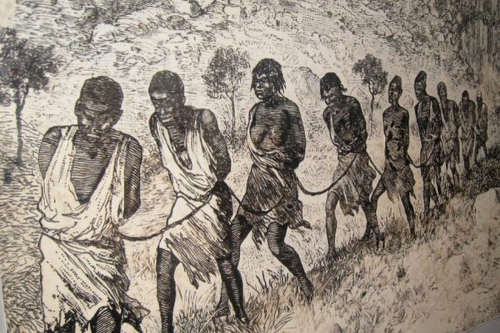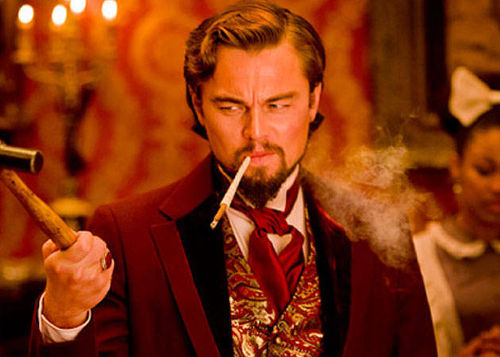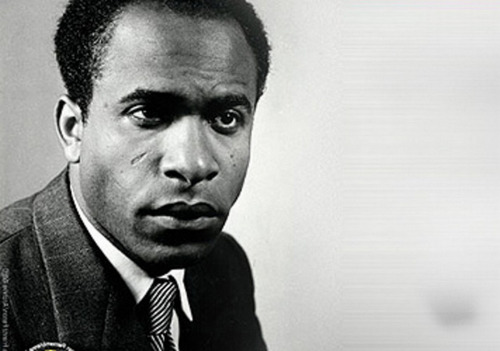In England, the word black (originally spelt “blæk”), from its Germanic/Dutch root “blah”/“blaken,” first appears in Old English around 1210, meaning “absolutely dark, absorbing all light, the colour of soot or coal” [www.etymonline.com].
Interestingly, “blac” from the same root, meant: “bright, shining, glittering, pale.” Linked to fire, the two meanings were reciprocal: fire is bright but it burns things dark. Like its French equivalent, black was first used only as an adjective, even in its first known application to skin complexion, as in “blakemoor,” later transcribed “Blackamoor”.

Beginning in the 14th Century, “black” (then spelt “blac/blake/ blak”) became a loaded moral/ethical synonym for “fierce, terrible, wicked;” or, figuratively, “without light, moral or spiritual.” The reason for this transformation is uncertain but its first literary appearance is definitely in The Mancible’s Tale, a component of the compilation of short stories called The Canterbury Tales by England’s best-known Middle English writer, Geoffrey Chaucer.
The Mancible’s Tale, written in verse, tells of the fate of a crow with splendid white feathers and a beautiful voice. The crow’s owner, a gentleman called Phoebus, had taught it to speak. One day, the crow, in uncensored detail, told Phoebus about his wife’s infidelity while he was away. Enraged with jealousy, Phoebus kills his wife.
Immediately realising that he acted too hastily, he blames the murder on the crow’s “tongue of scorpion.” Vengefully, he curses the crow, notwithstanding the fact that it had spoken with great candour about the incident:
Thou once sang like a nightingale;
Now shalt thou, false thief, give up thy song,
And also thy white feathers evry one,
Nor never in all thy life shalt thou speak,
Thus shall men on a traitor be avenged;
Thou and thy offspring ever shall be black [“blake” in the original].

Unequivocally, the English involvement in trafficking Africans into slavery gave birth to the “negro” identity in the English language. During the 1530s, English merchants began to visit West Africa (Guinea). In 1553, William Hawkins, father of John Hawkins, the putative “Father of the English slave trade,” brought five Africans from the Gold Coast [Ghana] to England.
Just two years later, the word “negro” entered the English language as an ethnic reference for West Africans. By the end of that century, it had already become a figurative expression for “gloomy, unlucky, bad, [and] wicked” (Etymonline.com): the synthesis with “black” was complete.
From that time, Anglophone writers began to render ancient references to Kushites, Nubians, Ethiopians, and other African peoples as “Black,” “Negro” and “Nigger,” without parenthesising the original expressions. As early as 1574, we see the expression “Nigers of Aethiop” (Ethiopia), a translation of the Spanish phrase, “los negros en Etiopía” (P. O’Connor & S. Kellerman, Origins of the Species, 2010). “Nigers” was an anglicised form of nègre; other variations included “neger,” “negar” and “niger.” By 1608, the word had already taken its final form as “nigger” in the phrase “Niggers, simple and harmless,” noted by the East India Company about the people of Sierra Leone (grammarphobia.com). In time, the word became one of the most vicious in the English language to insult and humiliate Africans, enslaved and free.
“I am black, but comely, O ye daughters of Jerusalem”—English King James version
The English transition from the curse of the crow to the curse of the black man was facilitated by English translations of the Bible, all but the first published in the era of the Atlantic slave trade. Although Ethiopia is presented in positive light, black skin is taboo, as we noted in the French Bible mentioned earlier.

In the Songs of Solomon, the declaration, “I am black but comely” (King James Version, 1611) just as the era of colonisation was about to be launched, would adorn the flagship of English racism.
The curse of blackness reached its zenith a few decades after the launch of the “Sugar Revolution” in Barbados. In 1690, England’s renowned philosopher-physician, John Locke, declaimed: “…the child can demonstrate to you that: the negro is not a Man, because White-colour was one of the constant simple ideas of the complex Idea he calls Man” (Essay Concerning Human Understanding). Half a century later, with the emergence of England as the Atlantic’s leading slave-trading nation, Scottish philosopher-historian, David Hume, conjectured: “I am apt to suspect the negroes, and in general, all the other species of men…to be naturally inferior to the whites” (Of National Characters, 1748).
Biologists such as Johann Blumenbach extended this superiority-inferiority construct to include moral character and physical beauty, with whites (Caucasians) always topping the chart and blacks (Ethiopians) at the bottom. To Blumenbach, the skulls he had examined proved that those of Caucasians were “the most handsome and becoming” because they best conformed to “opinions of symmetry.” On the other hand, those of “the Ethiopian variety” had narrow heads “compressed at the side and knotty” (On the Original Varieties of Human Races, 1795).
As late as the 1820s, newly promoted Parliamentary abolitionist leader Thomas Buxton succinctly summarised this imperialist belief in African servility and inferiority: “The black factor made the man a slave” (Claudius Fergus, Revolutionary Emancipation, 2013).
The 18th Century saw the formal beginnings of European anthropology. Although grounded in racism, the official taxon (classification) of the African “race” varied from Homo Africanus (African Type) to Homo Aethiopicus (Ethiopian Type).

(Copyright Django Unchained)
In this era, Africans proactively asserted their ethnic identity as “African” and “Ethiopian.” Maps of Africa complemented their effort in varying ways, such as presenting “Ethiopia” as a vast unspecific area south of the Sahara, extending well into the southern half of the continent; some maps named the Atlantic, Oceanus Aethiopicus (Ethiopian Ocean); others identified the Gulf of Guinea as the Ethiopian Sea and the archipelagic islands together with Madagascar in south-eastern Africa as the Ethiopian Archipelago.
From circa 1729, however, cartographers consistently promoted the notion of “Negroland” as an actual part of the continent, roughly consistent with the Arabic geographers’ location of Bilad as-sudan, later known as the Western Sudan, most of which was occupied by the Empires of Mali and its successor, Songhai. “Negroland” only became a reality in the European mind because of the Moroccan invasion at the end of the 16th Century, which destroyed and balkanised the empire into uncompetitive polities.
The obliteration of the Songhai Empire from African cartography catalysed the systematic “negroisation” of Africans “at home and abroad” by students of European anthropology during the 19th Century. The process was ironically facilitated by the most influential African intellectuals and civic leaders, such as Booker T. Washington, Edward Wilmot Blyden and W.E.B. Du Bois, each insisting on capitalising the “N” in negro to endow it with dignity. It was not that these minds were insensitive to the symbolisms in the word. St Clair Drake explains: “Du Bois winced at the appellation ‘black.’ It excited shame. For others, “Negro’ was a pejorative term akin to ‘nigger.’ For still others the word COLORED was too colorless” (Black Folk Here and There).
Fanon believed that the first objective of African liberation was self-consciousness. But, the process was a Catch-22 situation, as he explains in dialectic terms: “The first impulse at the arrival of awareness is self-loathing: as I began to recognise that the Negro is the symbol of sin, I catch myself hating the Negro.”

Indeed, the synthesis is difficult. Boukman Dutty (first leader of the Haitian Revolution) attempted to reach it by purging the country of slavery. Fanon proposed violent decolonisation: a process of “man recreating himself” (Jean-Paul Sartre in Frantz Fanon, The Wretched of the Earth). Long before Fanon, Caribbean-born Pan-African pioneer Wilmot Blyden had proposed an African renaissance, which would produce the “African personality.”
As articulated by Kwame Nkrumah, the African personality was “a re-awakening consciousness among Africans and people of African descent of the bonds which unite us—our historic past, our culture, our common experience and our aspirations” (June Milne, Kwame Nkrumah a Biography, 2000). The Black Power Revolution of 1970 demonstrated that the neurosis diagnosed by Fanon was surmountable.
It is still left to prove that it is sustainable.
Claudius Fergus is a retired Senior Lecturer in the Department of History at UWI’s St Augustine Campus who specialises in the abolition of British colonial slavery and its transatlantic slave trade.
His major work on the subject is Revolutionary Emancipation: Slavery and Abolitionism in the British West Indies (2013). He has other extensive publications in peer-reviewed journals and edited books.
 Wired868 Wired868 for smart sport news and opinion
Wired868 Wired868 for smart sport news and opinion







Dr Fergus cuts a clear path but still retains the zig zag of references for racism’s journey to present day Trinidad. Good stuff. Though examine as much as we could the knotty business of Black identity in Trinidad, race, caste and corruption render the etymology of the word Black a trifling source to be regained. The Bible, Chaucer, Shakespeare – have all compounded historically against the Black man, contained as we are in the bucket of species in the Darwinian experiment for our very survival. 1970 provided a break from the monotony of slavery but 1990 was clearly a false brother yet to be overcome. Thank you Dr Fergus, this series continues to be essential.
Very good read… much better than the Professor’s last offering.
Fanon quote”..One will never make colonialism blush for shame by withdrawing into the twilight of the African past”. Fanon was very clear on culture..The one that matters is the one that fighters are making everyday/everyway in their daily struggle against imperialism.
oh dear..oh dear..what is one supposed to make of such tautology?